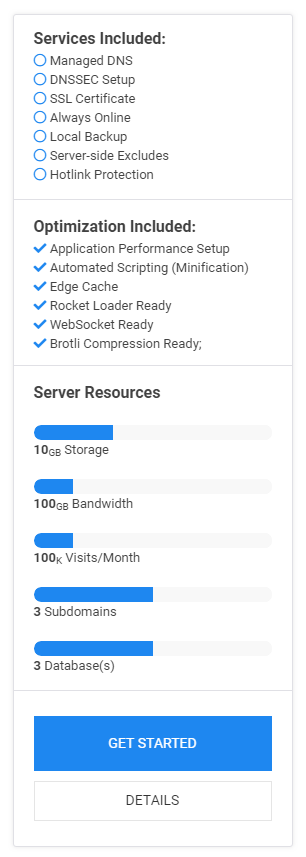Many Ideas are waiting to become Reality
Let us help you identify what you need
Getting Started
As a start-up, we know that the beginning can be hard.
Therefore we try to help you with the following section. We will provide you with a step-by-step guide to better understand your own needs and what this means in terms of hosting services.
You’ll be surprised how easy it could be.
Let’s start with an overview of our step-by-step process:
Step 1: What Intent do you have?
We know that your web application is unique so try your best to group yourself with INTENT
In this first step, it has been shown in SEO research that conversation success of a web presence is related to “search query intent” (or intent). Your intent can play a major role in selecting the right technology for your success. The questions throughout this process have been designed as a guide, helping you define your objectives, technologies, and platforms.
Therefore, we encourage you to ask yourself the question:
How would a client search for my web presence?
Try not to fall into the trap of asking the questions: “What do I want to achieve?” or even more importantly “What keyword search will help me rank?”
With this in mind, please try to group yourself into the following four categories below:
Step 2: What web technologies do I need?
Think of web technology which supports your intent
As stated before: Your technology should follow the purpose. Once the intent is established it would be time to compare it to the most suitable web technologies. We know that there are many web technologies available so if the technology you are using is not listed try to find the closest match.
Below you will find our most commonly supported web technologies. Please keep in mind that we do have some limitations and you can find this list at the bottom.
Step 3: What web platform do I want?
Identify your matching web platform for your web presence
You are almost there, please check if the required web platforms are supported with the following lists:
List of supported CMS Platforms
Description:
A CMS (or Content Management System) manages the creation and adaptation of your web applications digital content. By design, a CMS system can support the separation of content and presentation. It can support multiple users in a collaborative environment and includes Web-based publishing, format management, content history, and version control.
List of supported eCommerce Platforms
Description:
eCommerce systems are typically the engine behind the scenes of an online store, making it possible to easily manage inventory/ stock, add or remove products, calculate VAT/TAX, and everything else required to manage a website and fulfill orders for customers. eCommerce systems simplify intricate processes in a friendly user interface that enables people with non-technical backgrounds to oversee an entire online sales operation. In a way, they are similar to a CMS as they manage your products as a CMS manages your content.
List of supported Application Frameworks
Description:
An application framework is a software library that provides a fundamental structure to support the development of a web application for a specific system environment. An application framework helps a developer manage major tasks and cumbersome maintenance.
List of supported Front-end Frameworks
Description:
A front-end framework provides a standard way to build and deploy web applications consistently and accurately. These frameworks are usually universal and reusable and apply mostly to the overall "User-Experience". Front-end frameworks can provide particular or general functionality as part of a larger web application system (This is very common) and can facilitate the development of web applications fairly quickly.
List of supported Static Generators
Description:
Static Generators (or Web Page Generators) are framework/software that will generate upon request a static website. Static Generators generate the HTML code locally on your computer which can then in-turn be transferred to your virtual server.
List of supported Flat-File CMS
Description:
“Flat File CMS” is similar to a CMS in that it is a management system for content. It stores the content as individual text files rather than in a database and organizes the content in additional files and/or folders in a pre-defined directory (normally the root directory of your web application). Flat-file CMS’s are functional from install and do not require additional performance tweaks or plugins to function. They are also working with no database.
List of Unsupported Platforms
Description:
Please be aware that we are not supporting the following platforms for various reasons. If this is what you are currently using or plan to use, we are unfortunately not the right partner for you.
Step 4: What kind of resources needs do I have based on usage?
Estimate resource requirements
Last but not least please estimate your resource requirements for your specific web presence.
Ask these questions to determine your usage requirements:
- How many visitors do you expect on average per day?
- How many pages do these visitors visit per visit?
- What is my average page size in kilobytes (kB)?
- How large is my current hosting storage arrangement?
- How is my web application structured? Will or do I have subsets to my web application?
These questions and answers will drive the decision of which package best suits your web application. Please check out our technical Resource Center - Topic bandwidth calculator to help plan resource usage to fulfill traffic demands of your web application.
Hosting Package Detail Break Down
Choose a on the left for more details
-
Introduction
To the right is an example of a package detail outline.
Choose a on the right for more information
-
Services Included:
This section shows you at a glance what are the key features are of this specific hosting package. This shall help you in identifying the matching package in a quick manner. Key features normally combine topics from Server, Security, and Administration. This group of features ensures that your site is properly managed, safe and business continuity is enabled.
To read more about the available features for this specific package visit the related package page under Pricing or go to Plan Comparisons page.
-
Optimization Included:
This section quickly displays the major Optimization features of the specific hosting package. This helps you in identifying the matching package in a quick manner. Our Optimization features ensure fast delivery of your site since it reduces e.g. the amount or size of your data that is to be sent to the individual user.
To read more about the available features for this specific package visit the related package page under Pricing or go to Plan Comparisons page.
-
Storage:
The storage specification refers to the total amount of storage that is included in each package. Your directory, database, log files, and associated configuration files are all are included in this storage amount.
To read more about Storage visit the Storage Topic at the FullSail Systems Resource Center.
-
Bandwidth:
The bandwidth specification refers to the total amount of traffic in and out of the virtual server. This includes web traffic and FTP transfers. This is a kind of "web currency" in which web hosting costs are driven higher for all parties involved in this service. Bandwidth is comparable to "toll roads".
To read more about Bandwidth visit the Bandwidth Topic at the FullSail Systems Resource Center.
-
Visits/Month:
The number of visits refers to the monthly number of visitors to your web presence receives per month. The more visitors, the more resources are consumed and in turn, are required to host your web application. These statics are closely related to bandwidth requirements.
To read more about Visits/Month visit the Storage Topic at the FullSail Systems Resource Center.
-
Subdomains:
A subdomain is a domain that is part of a larger domain. The best way to think of a subdomain is that it shares your domain name but is treated like an entirely different website
Example: Domain = fullsailystems.com / subdomain = my.fullsailsystems.com
Visit here to read more about "What is a subdomain used for" at the FullSail Systems Resource Center.
-
Database(s):
A database is an organized collection of data, generally stored and accessed electronically from a computer system. Databases are normally used for bigger sites in connection with CMS or shopping cart systems. Based on the plan that you have chosen you are given a set number of databases.
To read more about Databases at FSS Resource Center - Topic Databases Topic
Our hosting packages are here to help you
Select your Matching Package
After you went through our guide feel free to make your selection for the matching hosting package for your needs.
And remember, there is no wrong decision going with FullSail Systems - we are here to help and you can always change your package as you grow.
LITE
Server Resources
5GB Storage
25GB Bandwidth
25K Visits/Month
1 Subdomains
1 Database(s)
ADVANCED
Server Resources
10GB Storage
100GB Bandwidth
100K Visits/Month
3 Subdomains
3 Database(s)
PRO
Server Resources
20GB Storage
500GB Bandwidth
500K Visits/Month
5 Subdomains
5 Database(s)
DEDICATED
Server Resources
UnlimitedGB Storage
UnlimitedGB Bandwidth
UnlimitedK Visits/Month
Unlimited Subdomains
Unlimited Database(s)
Need More Information?
Let us know what we can help you with. Submit the form below and a team member will respond to you shortly.





















